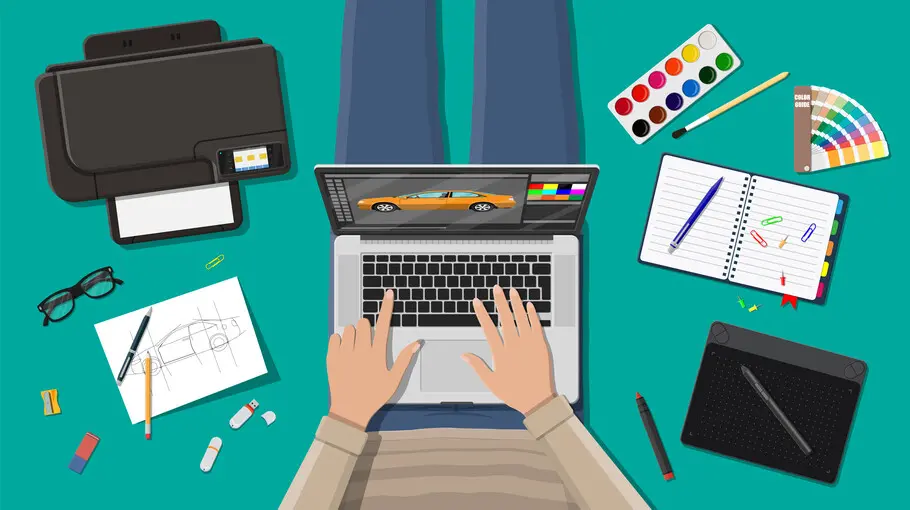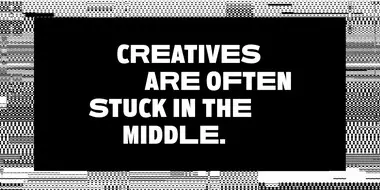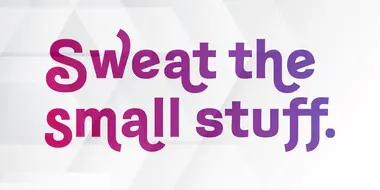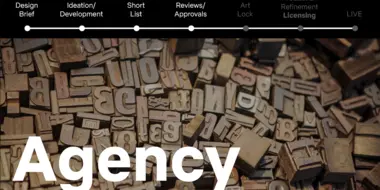Why it pays to pay for creativity.

Artists pour their heart and soul into their craft and creations and in an ideal world, every artist would be recognized and paid appropriately for their efforts. In reality, however, artists often have to fight for their rights to be upheld. This has been true for centuries and is only intensifying in the digital era.
Last month, the issue of artist’s rights once again made headlines when comedian Dave Chappelle urged fans to boycott the streaming of Chappelle’s Show. Using his platform on Saturday Night Live and Instagram, Chappelle brought attention to the fact he is not getting paid from ViacomCBS licensing the rights to his show.
While this is legally permissible given the contract he signed, the situation highlights the issue of brands making money from artists’ creative ideas and work through unfair and exploitative contracts. Chapelle spoke out on the issue after Netflix started streaming Chappelle’s Show, and Netflix opted to pull the show from its streaming platform out of respect for the artist and their existing contract for developing content together.
Rights in the digital era: It’s complicated.
The digital era has brought with it the free flow of information. It has simplified the creation process and has made it easier than ever for creativity to be shared. As a result, understanding and upholding the rights of creatives of all types have become especially important.
Some of the most important rights include those surrounding IP licensing and moral rights. Intangible assets created by an artist (i.e., fonts, images, music, etc.) are protected by intellectual property law. Artists can license this work to be used in a certain way by another entity. These licenses clearly define the parties involved, how the work will be used, and for how long.
Artists also have moral rights over their work through the Visual Artists Rights Act of 1990 (VARA), preventing their work from being revised, altered, or distorted without permission or in a way that can damage their reputation. However, VARA explicitly excludes electronic publications, posters, applied art, and works-for-hire. For works not covered under VARA, trademark law may be applicable as unfair competition, especially if another party passes work off as their own work.
While these are the basic rights of every artist, they are constantly threatened by various business practices, and protecting them is extremely challenging.
One of the longstanding issues challenging creatives’ rights is unfair contract practices, especially with new and minority artists. These practices have recently come under scrutiny thanks to artists like Chappelle, Megan Thee Stallion, and Kanye West shining a light on their own stories of lopsided arrangements.
Artists tend to get into these contracts when they are first starting out. They want to make it in their industry and are willing to take a bad deal for the chance at a break. Meanwhile, labels and companies are often ready to take advantage of these eager, sometimes desperate, and often financially naive artists, and offer contracts that are both unfair and exploitative.
Another issue artists face in protecting their rights is a lax attitude towards piracy on the Internet. There’s a tendency to treat the Internet as a free-for-all, which makes copying, modifying, or simply stealing work incredibly common. (Trust us, this happens way too frequently in the world of fonts.) It’s easy to find pirated, copied, or near-identical versions of nearly anything, and many designers and producers fail to do the necessary due diligence to make sure they have the proper licensing and that the work is being used correctly. As a result, artists often find others using their work without permission or remuneration, and lack the financial and legal resources necessary to do anything about it.
This makes protecting an artist’s rights difficult in the digital era. Piracy is often an international issue with numerous laws applying to rights over the work and fair use, making it difficult to fight. As for unfair contracts, many artists are simply unaware of what to look for or what is fair when first starting out. Whether they simply don’t understand the jargon used in the contract or feel like they don’t have a choice but to sign if they want their big break, artists end up signing contracts that prevent them from getting fair pay, even though the contracts are legal. Between legal fees and changing fee structures, renegotiating the contract is often a costly affair.
The value of valuing creative work.
Many of these unfair practices are simply considered par for the course, but that hardly makes it right. If companies want to build a positive reputation with both talent and customers, upholding the value of creative work is just good business sense.
Building a brand depends on a team of creatives. Brands want, and need, high-quality work that is distinctive to help them stand out from the competition. When a company or brand emphasizes the value of its creative team, they can attract top-notch talent to create the fonts, graphics, images, music, etc., needed in developing a strong brand image. Valuing and respecting the creative team also goes a long way in building positive relationships with artists for future projects.
Netflix is a prime example of a company respecting its creatives. When Chappelle approached the streaming giant about Chappelle’s Show, Netflix listened and simply pulled it from the platform. Chappelle has become a huge name and has a lucrative contract with Netflix, so it isn’t exactly surprising that the company would want to do right by him. But thousands of other artists without Chappelle’s clout deserve the same basic respect.
Other companies should take note of how Netflix not only listened but showed up and supported an artist that they work with. Companies can be allies for their creatives in several ways, whether it’s informing themselves of the process involved, listening if issues arise, and showing up for creatives when needed. Treating artists and creatives with respect, fairness, and dignity goes a long way to showing the world your values. And the ROI is pretty straightforward, too: Companies that value creativity are likely to attract the best creatives. That’s a win all around.
Jessica Saxena is a freelance writer who is passionate about the intersection of business and design. When she’s not writing, you’ll likely find her lost in a book or out exploring the world around her.














